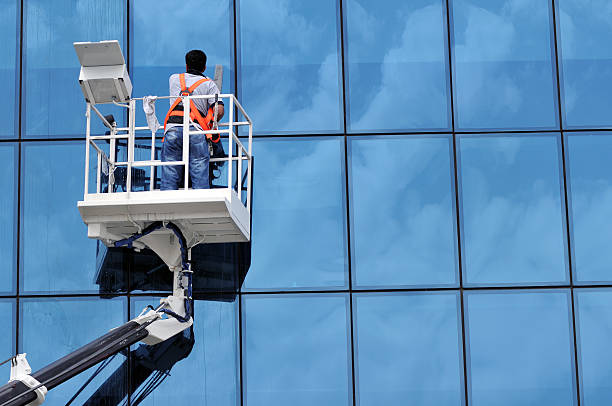Introduction:
Window cleaning in high-rise buildings is a task that combines both complexity and precision. As cities reach for the skies, maintaining these towering glass structures has become an engineering feat. This article explores how high-rise buildings handle the unique logistical challenges of window cleaning, from safety protocols to the advanced technology involved in accessing skyscraper exteriors.
The Challenges of High-Rise Window Cleaning
Cleaning the windows of skyscrapers isn't a simple task. In addition to height and weather risks, there’s a need to protect the building facade while ensuring minimal disruption to tenants and businesses. These challenges have led to specialized techniques and equipment tailored for high-altitude cleaning.
1.Safety and Compliance Requirements
The safety of window cleaners is paramount in any high-rise project. Strict safety protocols, guided by regulations such as OSHA in the U.S., require harnesses, ropes, and training. High-rise cleaners must be certified, equipped with extensive safety gear, and regularly retrained to ensure adherence to evolving standards.
2.Accessing Exterior Windows: Technology and Equipment
Technology has revolutionized how high-rise buildings tackle window cleaning. Buildings often use building maintenance units (BMUs), which are large, permanent rigs attached to rooftops, providing stable platforms for cleaners. Other tools, such as bosun’s chairs and suspended scaffolding, allow cleaners to navigate smaller or more complex building shapes.
3.Scheduling and Coordination with Building Operations
Cleaning schedules must align with business activities to minimize interruptions. In high-density commercial zones, operations are often restricted to early morning or weekend hours. Coordinating with building management ensures cleaners are notified of hazardous weather conditions, particularly wind, which is one of the greatest challenges at higher altitudes.
4.Automated Cleaning Systems
Innovations in robotic technology have enabled automated cleaning systems in some high-rise buildings. While not widely used yet due to the high installation costs, these robots navigate window surfaces, cleaning efficiently and safely. They are particularly useful in areas difficult for humans to access, such as curvatures and tall glass walls.
Environmental and Weather Considerations
Weather impacts window cleaning schedules. Windy conditions, rain, and excessive heat are significant barriers to safe operations. Additionally, the building’s geographical location can determine the frequency of window cleaning, as cities with high pollution require more frequent cleanings to maintain glass clarity.
Conclusion:
High-rise window cleaning logistics require meticulous planning, advanced technology, and strict adherence to safety standards. As buildings continue to rise in height, innovative solutions will shape the future of high-rise maintenance. We will publish the list of best window cleaning near me in our next article. Through careful coordination and technological advancements, skyscrapers can maintain their iconic glass facades safely and efficiently.






Comments